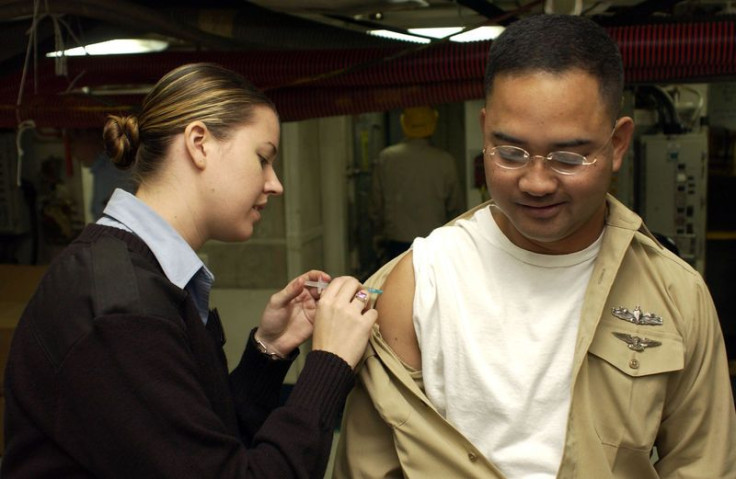Adult Vaccination Rates On The Rise, But Still Far Too Low; Tdap Shots Only At 13 Percent

Mother may know best, but she doesn't always practice what she preaches — and neither does Father, for that matter, according to the latest data from the Centers for Disease Control and Prevention (CDC).
Chalked up to procrastination and financial burden, 2011 — the last year the data was collected — witnessed startlingly low rates of vaccinations among adults. The CDC and U.S. Department of Health and Human Services assemble a yearly schedule recommending when people should get vaccinated, and the CDC has recently made data available for six of the illnesses on that schedule. Falling well below the herd immunity threshold — that is, the vaccination rate at which mass contagion ceases to pose a threat — adults abstaining from getting their shots end up putting everyone at risk.
The six illnesses include Tdap (tetanus, diphtheria, and acellular pertussis), HPV (human papillomavirus), varicella-zoster (chicken pox), and the PPSV23 vaccine, which protects against streptococcus pneumonia, also known as pneumococcus.
Tdap puts up the most alarming numbers. Only 13 percent of adults ages 19-64 received a Tdap vaccine. While still a gain from nine percent in 2010, the herd immunity thresholds for diphtheria and pertussis (whooping cough) sit at 85 and 92 percent, respectively. Around 85 percent of children receive Tdap vaccinations.
The CDC also lists tetanus on their schedule; however, the disease isn't transmitted between people so no herd immunity threshold exists.
Better still are rates for chicken pox and HPV. Sixteen percent of adults 60 and older have received a vaccination to prevent the delayed onset of the virus, which manifests itself later in life as shingles. The CDC estimates that half of the people 85 and older will develop the illness. And with 30 percent of women between 19-26 receiving the vaccine in 2011 compared to 21 percent in 2010, HPV moves ever closer to its threshold of 80 percent. (HPV is transmitted solely through sexual contact, not through the air, so the threshold is difficult to compute.)
Head and shoulders above the rest is the PPSV23 vaccine, which a respectable 62 percent of adults 65 and older have received.
Each of these statistics also comprises a nationwide goal set by the Department of Health and Human Services called Healthy People 2020. So far PPSV23 has come the closest to reaching its objective of 90 percent immunity.
Adults, who are free to exercise the right to their own health, stay unvaccinated for a host of reasons. Unlike children, who must get their necessary shots before starting school, adults have no incentive other than their health to receive the vaccination. When no symptoms exist, the burden of time and money weigh more heavily than the prevention of a possibly nonexistent illness.
"Most of the population thinks immunizations are for kids," said William Schaffner, chair of preventative medicine at Vanderbilt University, "other than maybe flu shots."
Schaffner said these factors together "plague adult immunization rates." However, he also cited findings that, ironically, may end up proving counterproductive in the fight to motivate adults. Children that receive regular vaccinations create healthier environments for their parents. So even without the vaccine, adults who get their kids vaccinated decrease their risk of developing illnesses, especially in one strain of streptococcus, Schaffner noted.
"The vaccine protects against seven strains. The rates plummeted in children, but to our surprise and enormous delight we discovered those same seven strains began to go down in adults, too."
Parents and nonparents alike can retrieve the full schedule of vaccinations at www.vaccines.gov.



























